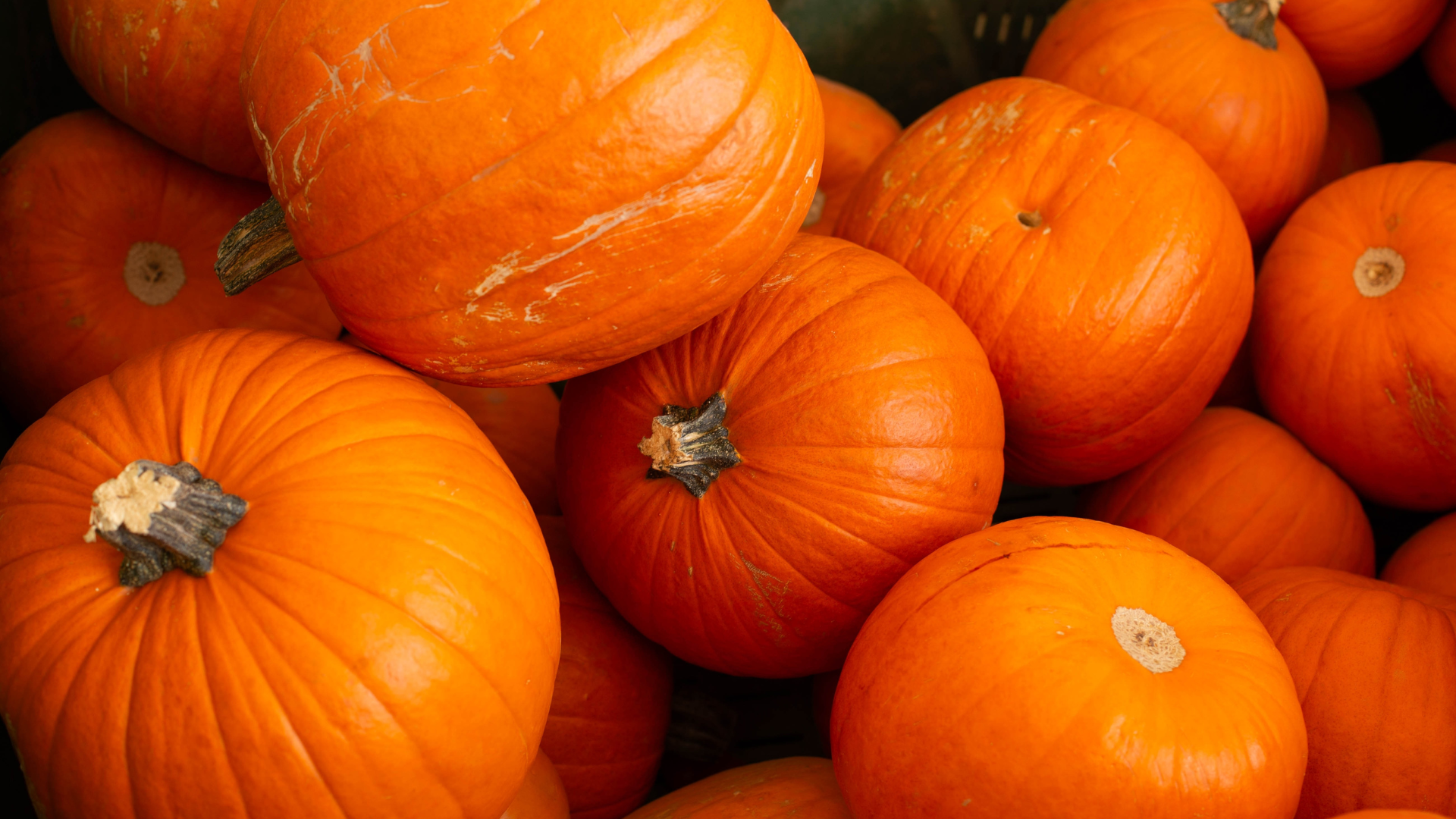Whether you’re a practical person who fishes their pumpkins out of a big crate at the grocery store or the sentimental type who values a stroll through a pumpkin patch, the general principles of picking out a good pumpkin are the same. Depending on what you want to use your pumpkins for—carving or eating—you may want to look for slightly different things. Here’s your guide to pumpkin picking.
What to look for in a pumpkin, generally
Even at the pumpkin patch, you’re (probably) not going to be hacking your own gourd off the vine, so it’s not worth discussing how to know when a pumpkin is ready to harvest. When you’re buying a pumpkin, they’ll have almost certainly been harvested already, sitting in some kind of bin or pile for you to dig through. That doesn’t mean they were all harvested when they should have been or that they’re all perfect. Here’s what to look for, generally, to ensure you choose the best one:
No matter what color the pumpkin is, that color should be visible all the way around the fruit. Avoid patchy pumpkins or ones with multiple colors and shades visible. Go for a solidly filled-in one.
Look for dry, withered stems to make sure this puppy isn’t too wet. Black or dark green colors on the stems are best. You want it rigid and almost dead-looking. If there are vines attached, make sure any leaves are also crispy. Try to select a pumpkin that has a longer stem, too; avoid any that have been cut too close to the rind. Even with a long stem, though, avoid picking the pumpkin up that way. Always cradle it and support it from the bottom.
The exterior of the pumpkins should also be hard. You shouldn’t be able to squish it or dent it with your hands. Try tapping on the rind and listening for a hollow sound. You don’t want a lot of mush anywhere, from the stem to the exterior to the inside. Soft spots on any part of the pumpkin mean that pumpkin is not for you.
Smell may also be a factor: go ahead and give it a sniff to see if you get a pumpkin-y”odor, but if you’re out in a pumpkin patch surrounded by smells on all sides, that may not do you much good.
The best pumpkins for decorating and eating
There are a few different varieties of pumpkin available. You don’t need to be a horticulturist and burst into the pumpkin patch with a list of pumpkin types on hand, although if it gets you into the holiday spirit, you certainly can. The best advice is, thankfully, simple: Larger pumpkins are best for carving and decorating while smaller ones are best for baking.
Obviously, bigger ones give you a larger canvas on which to express your spookiest artistic visions, but they’re useful for carving for other reasons, too. They’re stringy inside and less desirable for eating. Aim for 10 to 14 pounds if you plan on carving. For baking, you might see signs that say “sugar pumpkins” or “Dickenson pumpkins.” Your patch may even label “pie pumpkins.” Even without labels, you’ll know them by their size. Look for small, squat pumpkins around four pounds or so in weight. It’s better to get dense ones, so knock on these and listen to determine if they’re less hollow than the big boys you picked up for carving.
Bear in mind these are all suggestions—all pumpkins are good pumpkins. I regularly bake with the guts from my carving pumpkins and get no complaints. If your grocery store has limited options, don’t freak out. Just do the best you can.
